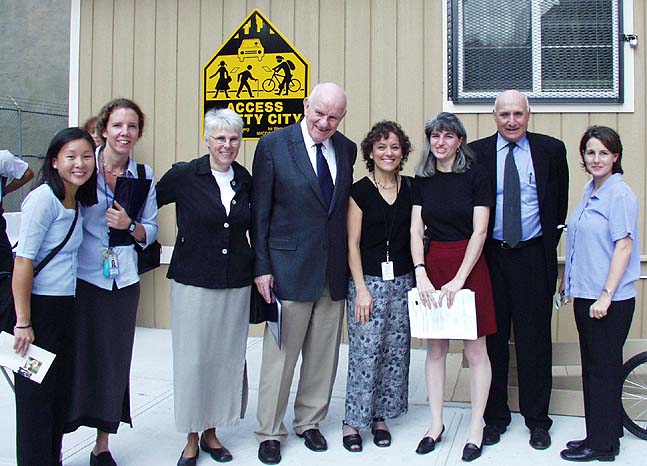
ACCESS SAFETY CITY
In response to data identifying motor vehicle crashes as the leading cause
of preventable death and a major cause of injury to New York children
between five and fourteen, the New York City Department of Transportation
opened its first Safety City in 1989. Located in Harlem, the Safety City
program provided classroom instruction and hands-on traffic safety training
in a simulated street-like setting. The program targeted third graders,
which was considered a developmentally ideal age to learn safety behavior.
Three years after the opening, the Columbia University School of Public
Health conducted an evaluation that showed a 55 percent decrease in motor
vehicle related injuries to central Harlem children. The success in Harlem
led to the opening of Safety City programs in the four boroughs of Staten
Island, Brooklyn, Queens, and Bronx in 1997.
Despite the resounding success of Safety City, there were still underserved
segments of the population, specifically the elderly and disabled. The
2000 census showed that although adults aged 65 and older comprise only
12 percent of the population, they comprised 35 percent of annual pedestrian
fatalities. The census also revealed that approximately 25 percent of
non-institutionalized New Yorkers over the age of four have a disability.
To address these issues, a sixth Safety City was opened in Manhattan on
October 2, 2002.
The goal of Access Safety City is to decrease motor vehicle related fatalities
and injuries to older adults and the disabled by providing classroom training
and hands-on experience tailored to their physical, developmental, and
learning abilities. In preparation, staff worked closely with the New
York City Department of Aging, Department of Education, and St. Mary’s
Hospital for Children. Collectively these organizations provided information
on the best methods of teaching, techniques to work with varying physical
abilities, and understanding special needs.
Like the other Safety City programs, Access Safety City emphasizes a learn-by-doing
method. An instructional team consisting of specially trained police officers,
student interns, health care providers, and educational professionals
collaborate in the educational process. Components include:
1) An indoor Learning Center that is a special classroom with video equipment,
a sound system, and up-to-date learning materials. Educational activities
were designed to build self-esteem and strengthen the student’s
ability to make safer choices when traveling around the city.
2) An outdoor simulated environment that includes a realistic street complete
with pavement markings, vehicles, traffic and pedestrian signals, street
signs, and other “street furniture.” Students learn and practice
safety skills in this protected environment.
3) Car seat installation instruction and bicycle helmet fittings are available
by appointment.
Contact:
Nancy Rodriguez
672 W. 158th St (Betwn: Riverside Dr & Henry Hudson Parkway)
Telephone: 212-795-3046